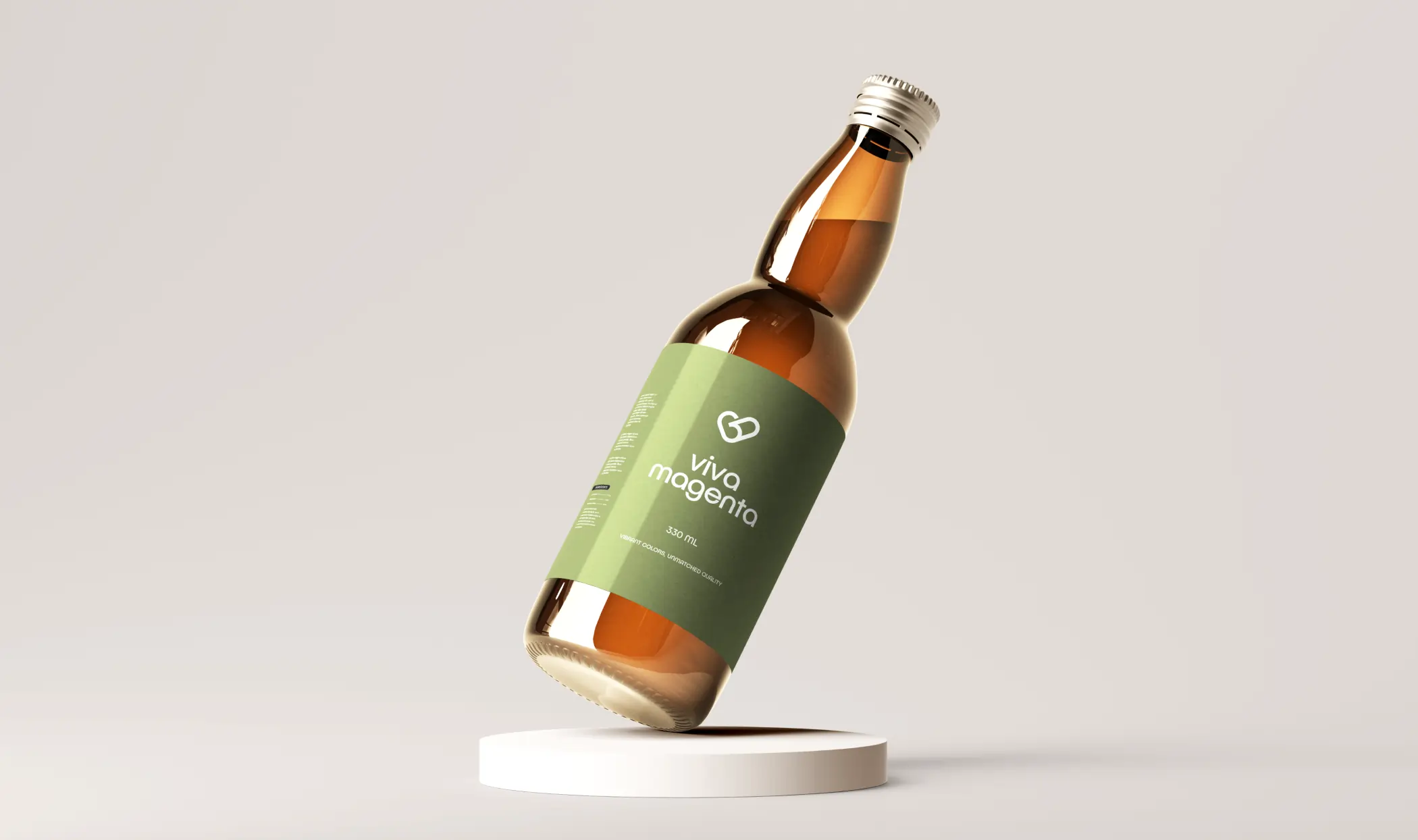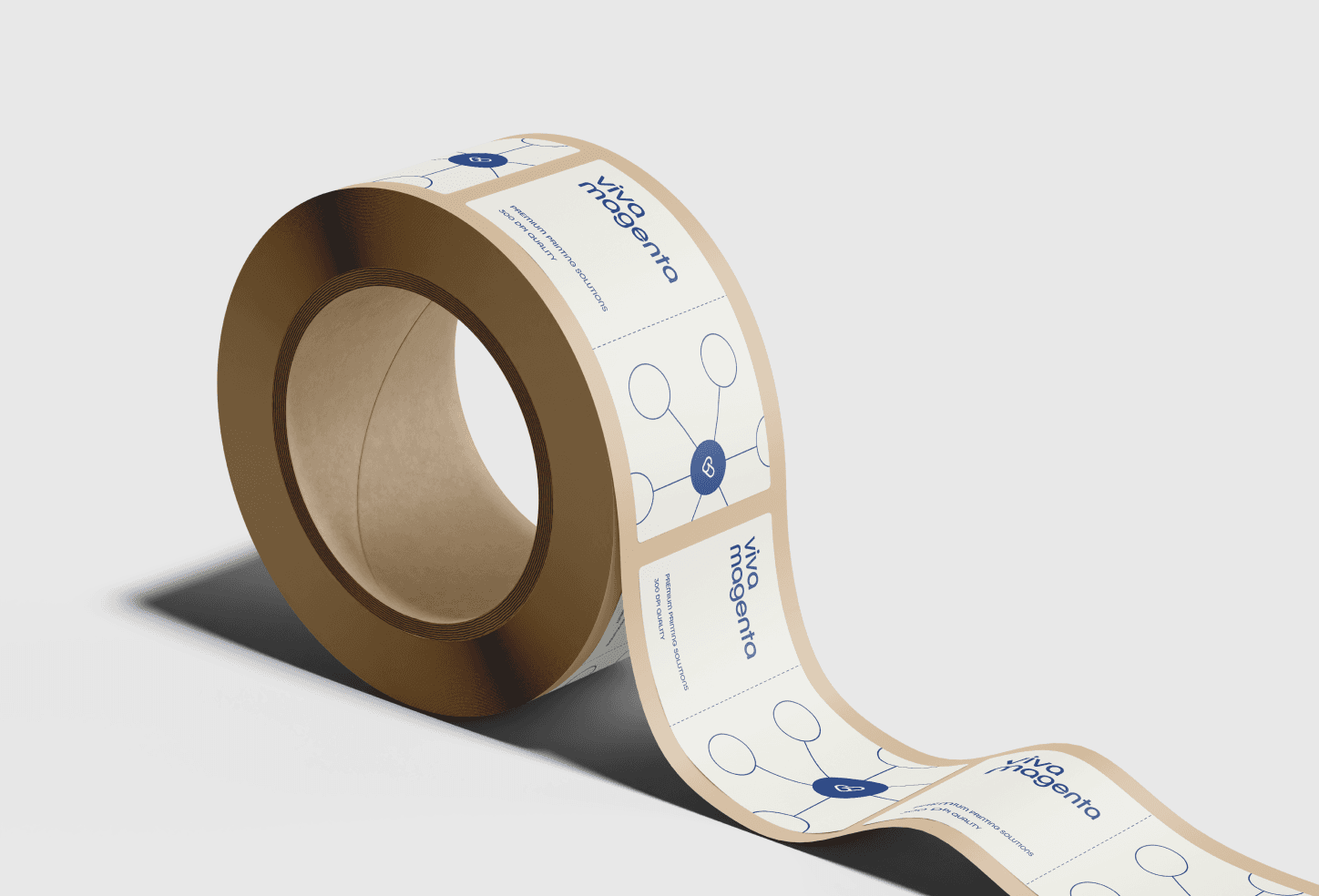How to Design a Beer Label: Size Guide & Dimensions
Stand out on the shelves and grab the attention your beer deserves! Crafting the perfect beer label is more important than ever in a market with choices. This guide will provide the essential size and dimension guidelines for your beer bottles and cans. Whether introducing a unique craft beer or expanding your established brand, these tips will ensure your labels catch the eye and reflect the quality of your brew.
What is the ideal size for a label?
The size of your beer label can dramatically influence customer perception and shelf appeal. Getting the dimensions right is the first step in creating a label that fits perfectly on your chosen container, whether a traditional bottle or a sleek can. This section will guide you through selecting the optimal label size for different types of beer packaging, helping to ensure that your label looks good, adheres properly and stays intact, even in the fridge.
How to customise your label size?
The choice of label size should take into account the specific dimensions of the bottle or can:
Bottle Shape and Size: The shape of the bottle, such as stubby, heritage, or long neck, can influence the appropriate label size.
Can Size and Style: Standard sizes like 12 oz, 16 oz, and taller slim cans each have their typical label dimensions. Matching the label size with the can's height and circumference is important to ensure a good fit.
Choosing the correct label size also depends on whether you opt for a partial or full wrap:
Partial Wrap: This setup consists of separate labels for the front and back. It is flexible, allowing for different sizes and designs on each side of the bottle or can.
Full Wrap: Encircles the entire container, providing a larger canvas for design but requiring precise measurements to ensure the ends meet without overlapping.
Detailed Size Guides for Different Bottle Types
What size label is a 275ml beer bottle?
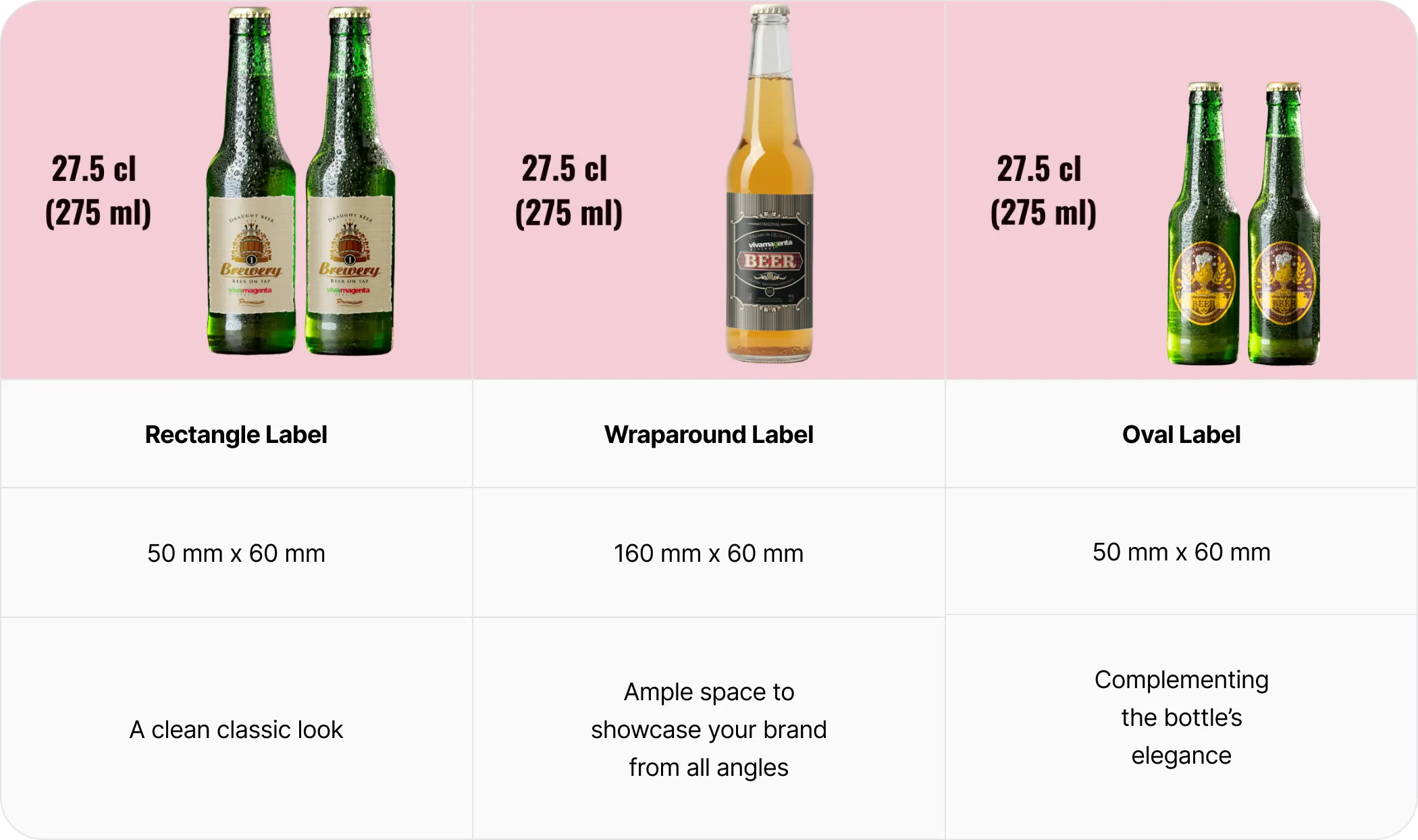
What size label is a 330ml beer bottle?
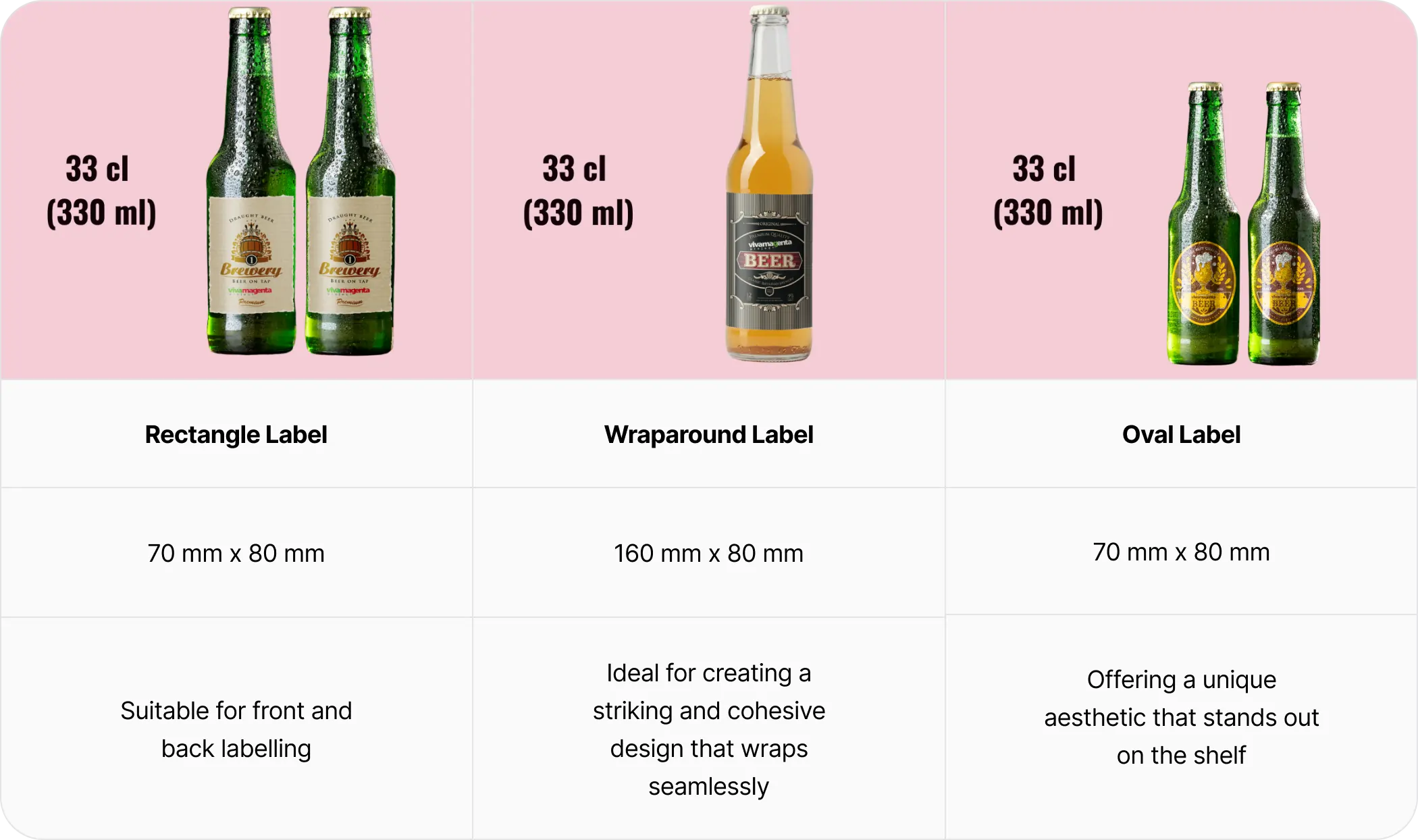
What size label is a 500ml beer bottle?
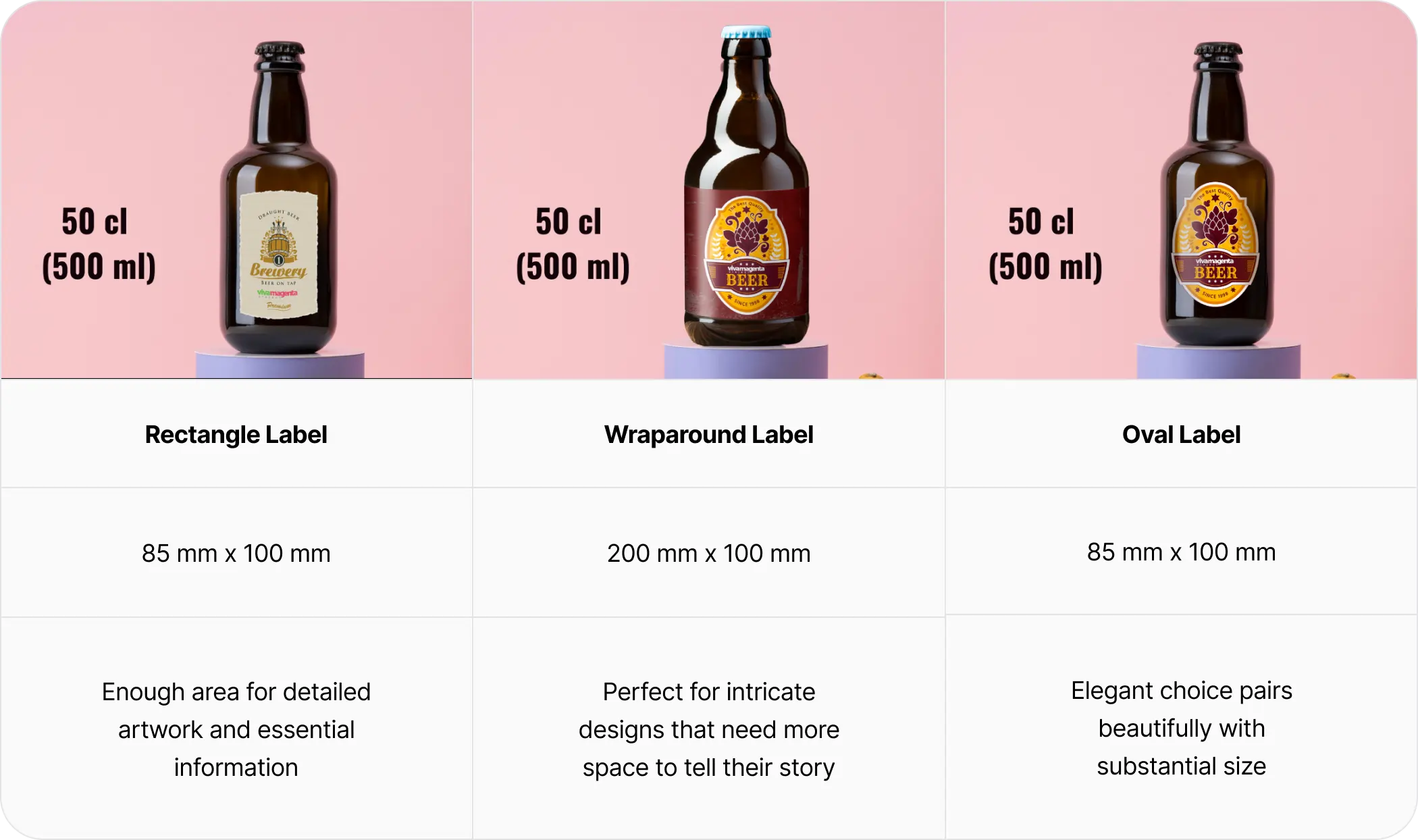
Design Considerations for Different Beer Bottles
Choosing the correct label isn't just about the size; it's also about considering the shape and type of the bottle or can. The label's design must complement the packaging to enhance overall aesthetic appeal and brand recognition.
Bottle Shape: The bottle's contour can influence the label shape choice. For example, a longneck bottle might pair well with a vertical oval or a slim wraparound label to accentuate its length, while a stubby bottle might better suit a square or round label that aligns with its compact form.
Label Placement: Decide whether you want a single label or separate labels for the front and back. Single wraparound labels offer a continuous design flow around the bottle, which can be visually striking. In contrast, separate labels allow for distinct front and back designs, which can help feature more detailed product information on the reverse side.
Material Choice: The label material should be aesthetically pleasing and functional. Choosing a water-resistant and durable label material for beer chilled or stored in moist conditions is crucial to ensure the label maintains its quality and readability over time.
How to choose the right material and style for beer labels?
Selecting the appropriate material and style for your beer labels is crucial for making a lasting impression. Here’s how to ensure your labels not only look great but also withstand the conditions they’ll face:
Material Durability: Opt for materials that can endure the refrigeration and moisture typically encountered by beer bottles. Vinyl or BOPP (biaxially oriented polypropylene) such as polypropylene labels and metallic labels are popular choices due to their resistance to water and tearing.
Finish Options: Choose between glossy and matte finishes based on your brand aesthetic. A glossy finish can make colours pop and attract the eye, while a matte finish offers a more subdued, sophisticated look that reduces glare.
Style Adaptation: The label's style should reflect your brand's personality and resonate with your target audience. Whether you opt for a classic, minimalist design or a vibrant, detailed illustration, ensure the style is consistent across all branding for coherence.
Custom Shapes: Don’t be afraid to experiment with custom die-cut labels that break away from traditional rectangles or ovals. Unique shapes can make your product stand out on crowded shelves and provide a distinctive brand signature.
Legal and Compliance Considerations
When designing beer labels, it's essential to factor in the legal and compliance requirements to avoid any regulatory issues affecting your ability to sell your beer. Here are key points to consider:
Mandatory Information: Ensure your labels include all required information, such as the alcohol by volume (ABV), net contents, ingredient list, manufacturer's name and address, and an appropriate government warning if required by law.
Label Readability: All text on the label must be clear and readable. This includes selecting a font size and style that is easy to read and using contrasting colours for text and background to ensure visibility.
Label Placement: Consider the placement of mandatory information to ensure it is not obscured by the design elements. Regulatory information should be prominently placed on the front or back label.
Local Regulations: If you plan to distribute your beer outside your immediate region, be aware of and comply with local and international regulations. Depending on the market, this may involve additional labels or language translations.
To Wrap Up
Crafting the perfect beer label involves much more than just aesthetic appeal. From selecting the correct sizes and materials to ensuring compliance with legal standards, every detail plays a pivotal role in the success of your product on the shelves. With the guidelines provided in this guide, you are well-equipped to design labels that capture the essence of your brew, resonate with consumers, and stand up to the practical challenges of retail distribution.
As you embark on this creative journey, remember that a well-designed label is your beer's first impression on potential buyers. Make it count by ensuring it is as outstanding as the beer inside the bottle or can.
